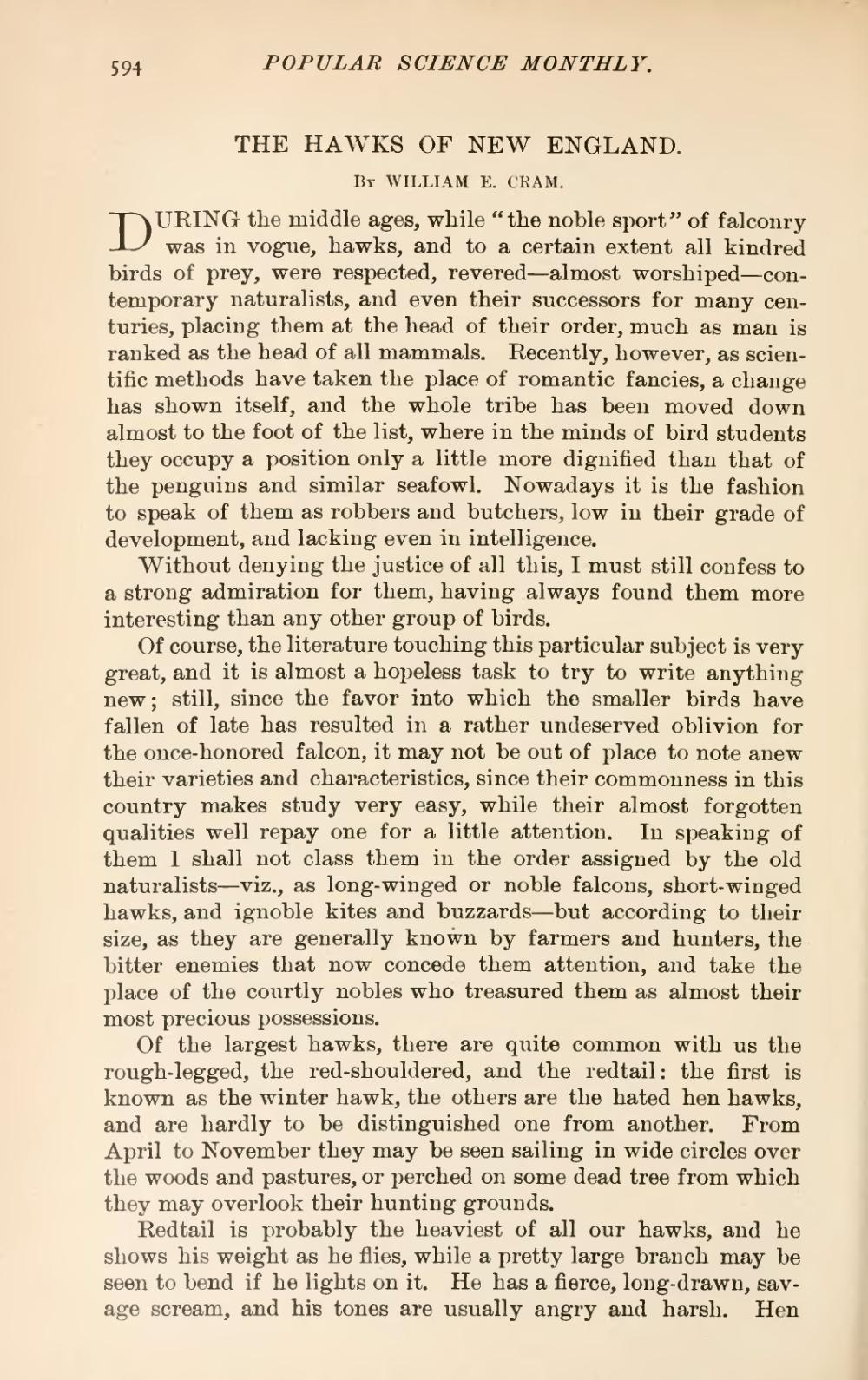| THE HAWKS OF NEW ENGLAND. |
By WILLIAM E. CRAM.
DURING the middle ages, while "the noble sport" of falconry was in vogue, hawks, and to a certain extent all kindred birds of prey, were respected, revered—almost worshiped—contemporary naturalists, and even their successors for many centuries, placing them at the head of their order, much as man is ranked as the head of all mammals. Recently, however, as scientific methods have taken the place of romantic fancies, a change has shown itself, and the whole tribe has been moved down almost to the foot of the list, where in the minds of bird students they occupy a position only a little more dignified than that of the penguins and similar seafowl. Nowadays it is the fashion to speak of them as robbers and butchers, low in their grade of development, and lacking even in intelligence.
Without denying the justice of all this, I must still confess to a strong admiration for them, having always found them more interesting than any other group of birds.
Of course, the literature touching this particular subject is very great, and it is almost a hopeless task to try to write anything new; still, since the favor into which the smaller birds have fallen of late has resulted in a rather undeserved oblivion for the once-honored falcon, it may not be out of place to note anew their varieties and characteristics, since their commonness in this country makes study very easy, while their almost forgotten qualities well repay one for a little attention. In speaking of them I shall not class them in the order assigned by the old naturalists viz.,—as long-winged or noble falcons, short-winged hawks, and ignoble kites and buzzards—but according to their size, as they are generally known by farmers and hunters, the bitter enemies that now concede them attention, and take the place of the courtly nobles who treasured them as almost their most precious possessions.
Of the largest hawks, there are quite common with us the rough-legged, the red-shouldered, and the redtail: the first is known as the winter hawk, the others are the hated hen hawks, and are hardly to be distinguished one from another. From April to November they may be seen sailing in wide circles over the woods and pastures, or perched on some dead tree from which they may overlook their hunting grounds.
Redtail is probably the heaviest of all our hawks, and he shows his weight as he flies, while a pretty large branch may be seen to bend if he lights on it. He has a fierce, long-drawn, savage scream, and his tones are usually angry and harsh. Hen

